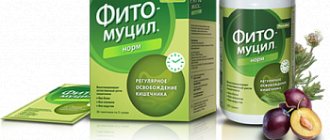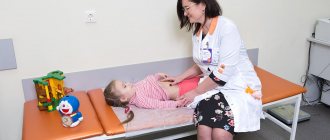The article was prepared by a specialist for informational purposes only. We urge you not to self-medicate. When the first symptoms appear, consult a doctor.
Nausea accompanies many diseases and various conditions of the body. Some of them pose a threat to human health, others simply worsen the quality of life. In any case, nausea is an unpleasant phenomenon, so you need to get rid of it.
There is no single universal method for dealing with nausea. There are drugs that are used to eliminate nausea, but they act on it as a symptom, without eliminating the cause of its occurrence. By turning off the part of the brain that is responsible for nausea, a person begins to feel better. At the same time, the underlying disease will continue to progress. Therefore, if nausea occurs, you need to take the right measures that will be aimed at eliminating the causes of its occurrence.
Morning sickness without abdominal pain
When a person wakes up in the morning with a feeling of nausea for a long time, he needs to see a therapist or gastroenterologist. Often this symptom indicates inflammation of the gastric mucosa or GERD. The examination will make it possible to exclude or confirm these diagnoses.
>
| Causes of nausea and accompanying symptoms | Diagnostic methods | How to deal with the problem |
| Pregnancy. In addition to nausea, a woman’s taste preferences change and her sensitivity to smells increases. | You can purchase a pregnancy test at the pharmacy and perform it at home. You can go to the hospital and donate blood for human chorionic gonadotropin, and also visit a gynecologist. | If nausea is intense and difficult to cope with, you should consult a doctor. When you feel sick in the morning and during the day, and sometimes vomiting occurs, but this does not affect a woman’s weight, you can use the following recommendations:
|
| Medicines. If a person takes medications on an empty stomach, this can lead to nausea and vomiting. Sometimes such symptoms act as a side effect, which is indicated in the instructions. | You need to ask the doctor to change the drug. | You should not do anything without medical advice. Severe nausea and vomiting is a reason to change the medication. |
| Biliary dyskinesia. This disease often accompanies gallstone disease. The pathology is accompanied by nausea and vomiting, bitterness, and a metallic taste in the mouth. A person feels sick both before and after eating. There may be pain in the right hypochondrium. | It is necessary to perform an ultrasound of the liver, gallbladder and its ducts. | You should not treat the disease yourself, as this can lead to the stone moving and closing the lumen of the bile ducts. This is a dangerous situation that requires surgical intervention. Until you visit the doctor, you need to follow a diet, avoid fried foods, eat often and in small portions, and drink plenty of water. |
| Hydrocephalus. With this pathology, fluid accumulates in the cranial cavity. It develops after injury or surgery. In addition to nausea, a person experiences headaches, a feeling of pressure on the eye sockets and dizziness. | You need to perform a CT or MRI of the brain. | Until treatment is prescribed, you are prohibited from taking any measures to eliminate this condition on your own. To make you feel better, it is recommended to sleep on a high pillow. You can take painkillers. |
Emergency conditions in gynecology
“Acute abdomen” in gynecology is a syndrome that develops as a result of acute pathology in the abdominal cavity and is manifested by sudden pain in any part of the abdomen, peritoneal symptoms and pronounced changes in the patient’s condition.
Acute pain in the lower abdomen in women with severe peritoneal symptoms is possible:
- with intra-abdominal bleeding (ectopic pregnancy, ovarian apoplexy);
- torsion of the legs of an ovarian cyst (cystoma);
- perforation of purulent formations of the appendages;
- pelvioperitonitis.
Risk factors for developing ectopic pregnancy:
- previous history of salpingoophoritis, endomyometritis, abortion;
- violation of hormonal function of the ovaries;
- genital infantilism;
- endometriosis;
- previous operations on the internal genital organs;
- increased trophoblast activity.
In an ectopic pregnancy, the fertilized egg implants and develops outside the uterine cavity. Pregnancy can develop or be disrupted (by the type of tubal abortion or by the type of fallopian tube rupture).
During a tubal abortion, the fertilized egg, not having the appropriate conditions for development, peels off from the walls of the fallopian tube and is expelled into the abdominal cavity. Due to the rhythmic contraction of the fallopian tube, blood enters the abdominal cavity periodically.
When the fallopian tube ruptures (with a delay of menstruation by an average of 3–4 weeks) as a result of a violation of an ectopic pregnancy, the villi of the fertilized egg completely destroy the thin wall of the fallopian tube and blood from the damaged vessels pours into the abdominal cavity.
Ovarian apoplexy (ovarian rupture, ovarian infarction, ovarian hematoma) is an acute violation of the integrity of the ovary with hemorrhage into its stroma and subsequent bleeding into the abdominal cavity. Ovarian apoplexy occurs more often in women of reproductive age, but also occurs in adolescents, more often occurring during the period of ovulation and in the stage of vascularization and flowering of the corpus luteum.
Ovarian rupture occurs due to:
- congestive hyperemia;
- varicose or sclerotic vessels;
- sclerotic changes in the stroma;
- dysfunctions of the autonomic and endocrine systems.
A hematoma forms, which causes sharp pain due to an increase in intraovarian pressure, followed by rupture of the ovarian tissue.
Torsion of the pedicle of an ovarian cyst (cystoma) is a complication of an ovarian cyst or cystoma. The onset of the disease is often associated with the following factors:
- sudden change in body position;
- increased intra-abdominal pressure as a result of strong straining, prolonged coughing, heavy physical work;
- impaired blood supply to the cyst.
When the cyst pedicle is torsed, the following is observed:
- disturbance of blood supply;
- swelling of the cyst;
- hemorrhage and necrosis of the parenchyma.
With partial (gradual) torsion:
- the leg changes its position by 90–180°;
- arterial blood flow is maintained;
- venous outflow is difficult due to vascular compression;
- Venous congestion and swelling of the cyst wall occur.
In case of complete (sudden) torsion:
- the leg changes its position by 360°;
- arterial blood flow stops;
- necrobiotic processes occur in the ovarian cyst;
- peritoneal symptoms appear;
- When the cyst becomes infected, peritonitis begins.
Provoking factors for the development of purulent formations of the appendages are:
- microbial invasion;
- weakening or changing the barrier properties of the uterus and genital tract:
– physiological (menstruation, childbirth);– iatrogenic (abortion, intrauterine contraceptives, operations, hysteroscopy, in vitro fertilization).
The routes of infection of the appendages can be intracanalicular, ascending, hematogenous, lymphogenous.
The following ectopic pregnancies are distinguished: tubal, ovarian, cervical, in the rudimentary horn, abdominal.
Fallopian tube rupture occurs suddenly and causes:
- bleeding, usually massive (intra-abdominal);
- pain in the lower abdomen, radiating to the rectum;
- dizziness;
- weakness;
- pale skin;
- fainting state.
With continued bleeding, hemorrhagic shock and posthemorrhagic anemia begin. The severity of hemodynamic disorders is directly dependent on the deficit in circulating blood volume.
Ovarian apoplexy is accompanied by: intra-abdominal bleeding (anemic form of apoplexy); pain syndrome (pain form).
The disease begins acutely, with sudden pain in the lower abdomen, mainly on the affected side.
Torsion of the pedicle of an ovarian cyst (cystoma) causes:
- pain in the lower abdomen from the side of the mass - gradually increasing or acute;
- nausea, vomiting, flatulence;
- intestinal paresis;
- tension of the anterior abdominal wall;
- symptoms of peritoneal irritation.
The clinical picture of inflammatory diseases of the female genital organs, in particular the uterine appendages, is often blurred and asymptomatic. Pyosalpinx, piovar, tubo-ovarian abscess cause:
- constant pain in the lower abdomen, mainly due to inflammation;
- chills, high fever;
- weakness;
- tachycardia;
- nausea, stool retention, gas;
- purulent discharge from the genital tract.
The pain radiates to the lower extremities and lumbar region. The abdomen is soft and may be moderately swollen.
With perforation of purulent formations, mild symptoms of peritonitis appear already in the first hours, which overlap with the clinical picture of a severe inflammatory process and include:
- pain is intense, sometimes aching, of unclear localization;
- chills, fever, tachycardia;
- painful urination;
- loose stools;
- bloating;
- local symptoms of peritoneal irritation.
Possible complications include intra-abdominal bleeding and pelvioperitonitis or peritonitis.
Diagnostics
Symptoms of ectopic pregnancy:
- amenorrhea 4–8 weeks, probable signs of pregnancy;
- positive immunological reactions to pregnancy;
- the size of the uterus is less than the expected pregnancy;
- spotting bloody discharge from the genital tract;
- unilateral cramping or constant pain;
- pain when the cervix is displaced;
- unilateral adnextumor;
- general disorders (deterioration of general condition, nausea, diarrhea, flatulence).
When the fallopian tube ruptures, the abdomen participates in the act of breathing to a limited extent, is painful on palpation and percussion, symptoms of peritoneal irritation are positive, and upon percussion there is dullness in the sloping areas of the abdomen.
In case of ovarian apoplexy, during examination the following is determined:
- in the painful form - pain in the lower abdomen, symptoms of peritoneal irritation are mild;
- in the anemic form - signs of intra-abdominal bleeding.
During an objective examination, general signs include behavior, gait, position in the gynecological chair and reaction to pain with facial expressions; color of skin and mucous membranes.
The respiratory rate can be more than 20 beats/min - with peritonitis, acute blood loss.
Tachycardia is always present in “acute abdomen” of any origin, as it is characteristic of fever, hypovolemia, and acute blood loss.
“Acute abdomen” is not accompanied by hypertension. Hypotension is caused either by a septic condition or by hypovolemia due to acute blood loss (tubal rupture, cyst rupture, ovarian apoplexy).
A general objective examination reveals signs of pregnancy: enlargement (engorgement) of the mammary glands, pigmentation of the nipples, and the release of colostrum.
A coated, dry tongue indicates inflammatory processes in the genitals, appendicitis, intestinal obstruction, and peritonitis.
An increase in abdominal volume is observed with large tumors, ascites, intestinal obstruction, peritonitis, intra-abdominal bleeding; lag of the abdominal wall from respiratory excursions - for all causes of “acute abdomen”.
Palpation of the abdomen during peritonitis reveals tension and pain in the abdominal wall, Shchetkin-Blumberg symptom; with bleeding into the abdominal cavity (ovarian apoplexy, rupture of the fallopian tube, rupture of the spleen) - Kulenkampff's symptom, pain and symptoms of irritation of the peritoneum without tension in the abdominal wall.
With intra-abdominal bleeding, inflammatory effusion, ascites, percussion of the abdomen shows dullness in sloping areas (iliac regions), which moves when the body changes to one side.
In a general blood test, leukocytosis, a shift in the leukocyte formula to the left, and an accelerated ESR indicate inflammatory diseases of the genitals; a decrease in hemoglobin level indicates intra-abdominal bleeding.
Puncture of the abdominal cavity through the posterior vaginal fornix reveals the nature of the liquid contents in the abdominal cavity (pus, serous effusion, blood).
An ultrasound is performed to clarify the size of the uterus, identify pathological formations in the uterus and appendages, and the presence of effusion.
Differential diagnosis of fallopian tube rupture is carried out with the following conditions:
- ectopic pregnancy (delayed menstruation, subjective signs of pregnancy, bleeding from the genital tract);
- acute pancreatitis (girdle pain, intense, poor diet, chronic diseases of the digestive system);
- perforated ulcer of the stomach and duodenum;
- acute appendicitis;
- torsion of the pedicle of an ovarian cyst, etc.
Torsion of the pedicle of the cyst (cystoma) and ovarian apoplexy are differentiated from acute appendicitis and impaired ectopic pregnancy.
Main directions of therapy
- In case of intra-abdominal bleeding - administration of blood-substituting solutions (dextrans, starch preparations) until hospitalization.
- Broad-spectrum and long-acting antibiotics (ceftriaxone 1–2 g intravenously or intramuscularly in combination with metronidazole 100 ml intravenously and amoxicillin 2–4 g intravenously in combination with metronidazole 100 ml intravenously).
In case of torsion of the pedicle of the cyst (cystoma) of the ovary, treatment is not carried out at the prehospital stage.
The algorithm for dealing with bleeding in the event of an ectopic pregnancy is presented in the figure.
Clinical pharmacology of individual drugs
Reopolyglucin is a 10% solution of low molecular weight dextran dissolved in an isotonic sodium chloride solution. It has a detoxifying effect, prevents and eliminates the aggregation of blood cells and reduces its viscosity, helps restore blood flow in small vessels. Available in bottles of 200 and 400 ml. Administer intravenously in streams and drips of 400–1000 ml (up to 1500 ml).
Polyglucin (dextran) is a synthetic colloidal plasma substitute that has a colloid-osmotic and hemodynamic effect. Produced in bottles of 200 and 400 ml of 6% solution. Administer intravenously in streams and drips of 400–1200 ml (up to 2000 ml).
Common errors in therapy are: administration of analgesics and delay in hospitalization.
Analysis of clinical cases. The ambulance team was called to the home of a 24-year-old patient who complained of weakness, dizziness, dry mouth, and pain in the lower abdomen radiating to the rectum. The patient became acutely ill 2 hours ago, when the above complaints suddenly arose after coitus.
From the anamnesis, it was possible to find out that the patient’s menstruation began at the age of 12, 6–7 days after 30 days, moderate, painless. The last menstruation began 14 days ago, came on time, and went as usual. Contraception was carried out with the combined oral contraceptive Logest for 4 months.
On examination: the patient's condition is moderate. The skin is pale. The tongue is dry, covered with a white coating. Blood pressure - 90/60 mm Hg. Art., pulse - 92 beats/min, rhythmic. Heart sounds are clear and rhythmic. The abdomen evenly participates in the act of breathing, is somewhat swollen, sharply painful on palpation in the lower parts. The Shchetkin–Blumberg sign is positive in the lower sections.
Probable diagnosis: ovarian apoplexy, intra-abdominal bleeding.
Emergency hospitalization to a gynecological hospital is indicated and, taking into account the presence of intra-abdominal bleeding, the administration of blood replacement solutions (dextrans, starch preparations) is indicated at the pre-hospital stage.
The ambulance team was called to the home of a 20-year-old patient who complained of pain in the left lower abdomen, nausea, vomiting, flatulence, gradually increasing or acute; I fell ill 3 days ago, when, after physical activity, pain first appeared in the lower abdomen, more on the left, which gradually intensified.
From the anamnesis: the patient’s menstruation from 15 years of age was 4–5 days every 30 days, moderate, painless. The last menstruation began 10 days ago, came on time, and went as usual. Sexual life from the age of 17, without contraception. The only pregnancy ended in an induced abortion at 5 weeks, without complications. 2 months ago, during a routine examination, a gynecologist discovered a cyst on the right ovary. No treatment was given.
Objectively: the patient’s condition is of moderate severity. The skin is pale. The tongue is clean and moist. Blood pressure - 110/75 mm Hg. Art., pulse - 78 beats/min, rhythmic. Heart sounds are clear and rhythmic.
The abdomen evenly participates in the act of breathing, is not distended, there is pronounced tension in the muscles of the anterior abdominal wall, the symptoms of peritoneal irritation are positive.
Presumable diagnosis: torsion of the pedicle of the right ovarian cyst. The patient is indicated for urgent hospitalization in a hospital. If the pedicle of an ovarian cyst is torsed, no treatment is carried out at the prehospital stage.
Let's give other examples.
The ambulance station received a call from patient E., 34 years old, who 5 hours ago developed intense aching pain of unclear localization, chills, fever, painful urination, loose stools, and bloating. 10 days ago, the patient underwent an ultrasound-guided medical abortion at 8 weeks of pregnancy and removal of an intrauterine contraceptive inserted 7 years ago. After 7 days, cloudy, purulent discharge from the genital tract with an unpleasant odor appeared.
Probable diagnosis: acute bilateral salpingoophoritis, endomyometritis; pelvioperitonitis.
The patient requires emergency hospitalization in a gynecological hospital. At the prehospital stage, infusion, antibacterial, and anti-inflammatory therapy is indicated.
The ambulance station received a call from patient D., 28 years old, who, 3 hours ago after lifting weights, developed pain in the lower abdomen, which gradually intensified, as well as nausea, vomiting, and dry mouth. From the medical history, it was possible to find out that the patient’s last normal menstruation was 3 weeks ago, came on time, and was more scanty. It is necessary to make a differential diagnosis between acute appendicitis, torsion of the pedicle of an ovarian cyst, and impaired tubal pregnancy.
The patient is indicated for urgent hospitalization in a gynecological hospital.
Taking into account the possibility that the patient had a torsion of the pedicle of the ovarian cyst, no treatment was carried out at the prehospital stage.
A. Z. Khashukoeva , Doctor of Medical Sciences, Professor Z. Z. Khashukoeva Russian State Medical University, Moscow
Morning sickness and upper abdominal pain
>
| Causes and symptoms | Diagnostics | Treatment Options |
If your stomach hurts and you feel sick on an empty stomach, or half an hour after eating, this may indicate the following diseases:
| It is required to perform FGDS. First you need to go to an appointment with a gastroenterologist. | If the diagnosis is not confirmed, the following recommendations can help alleviate the condition:
If the nausea is severe, you can dissolve a Mosid tablet by placing it under your tongue. After half an hour you will need to take a portion of food. |
Nausea and pain in the center of the abdomen
There are several reasons that can lead to nausea and pain in the center of the abdomen.
- Nausea after eating fatty foods. If nausea develops after eating foods with a high percentage of fat, this may indicate cholecystitis. If such a diagnosis is made, hospitalization will be required. For chronic cholecystitis, outpatient treatment is possible. The vast majority of patients with cholecystitis have gallstones.
During an attack of biliary colic, a person experiences severe pain in the right side, under the ribs. They hit the back and neck. The person feels sick and vomits. Bile is noticeable in the vomit.
If the body temperature remains within normal limits, the pain is mild or of moderate intensity, and stool and urine have the usual color, then you can wait to call an ambulance.
Before contacting a doctor, you should follow a number of recommendations:
- Take an antispasmodic, for example, No-shpu or Spazmalgon.
- Drink water.
- Avoid eating fatty and fried foods, fatty meats and fish, smoked foods, marinades, and sweets.
- You can take 1 tablet from two different drugs (your choice): Domrid, Motilium, Rabeprazole (optionally, Pantoprazole). After half an hour, you need to eat something, despite the nausea.
- You need to eat often, but in small amounts - 5 times a day, at least. This allows you to normalize the digestive processes, which has a positive effect on the functioning of the gallbladder.
- Nausea and abdominal pain after drinking alcohol, spicy and fatty foods. When the pain is localized in the left side under the ribs, or encircles the abdomen, and nausea and vomiting are also present, such symptoms may indicate developing pancreatitis.
It is impossible to treat pancreatitis at home. To reduce pain, you can take an antispasmodic, after which you should call a medical team. In addition to the painkiller, you are allowed to take Omeprazole or Rabeprazole, as well as: Cerucal, Motilium, Gastal or Phosphalugel.
If a patient with acute pancreatitis is not taken to a medical facility on time, he may die.
- Nausea with or without abdominal pain, which develops when eating dairy products, confectionery products with cream, or after eating food of questionable quality. Such symptoms most often indicate poisoning. It is difficult to distinguish it from an intestinal infection if you rely solely on the symptoms of the disease. A person develops diarrhea, nausea, and vomiting. An increase in body temperature is often observed. Food poisoning and intestinal infections (salmonellosis, dysentery, E. coli entering the stomach), their clinical manifestations resemble pancreatitis. However, with intestinal infections, the stomach does not hurt, vomiting most often occurs no more than 2-3 times, and the stool is not always mushy. It may contain inclusions of mucus, blood, and greenery.
Diet and painkillers are temporary measures that can be followed until you can see a doctor.
It is sometimes possible to cope with food poisoning at home. To do this, a person needs to drink a sorbent, for example, Enterosgel or Polysorb, and also take Enterofuril or Stopdiar. An important condition for recovery is to drink plenty of water to prevent dehydration.
If you have food poisoning, do not take medications to stop diarrhea, such as Loperamide or Imodium.
Main acute and chronic causes
Dizziness and weakness can cause both acute and chronic forms of illness. In the case of acute diseases, the most common cause is sudden severe pain (shock) with a perforated gastric ulcer, an attack of appendicitis, pancreatitis, gallstones and kidney stones, gastrointestinal bleeding, strangulated hernia.
Severe pain syndrome causes spasm of cerebral vessels; cells react to hypoxia (lack of oxygen). Clinical manifestations develop quickly. First, the person complains of sudden, sometimes “dagger-like” pain:
- with a perforated ulcer in the epigastrium;
- with pancreatitis of a shingles nature;
- in the case of renal colic - in the lower back and side of the abdomen;
- acute cholecystitis and cholelithiasis give pain in the hypochondrium on the right with irradiation to the scapula and collarbone.
In women, sudden pain is caused by hemorrhage in the ovaries, rupture and torsion of the cyst, ectopic pregnancy with overstretching and disruption of the integrity of the fallopian tube. At the same time, the lower abdomen hurts and the head feels dizzy.
People react to pain differently: some have a high pain threshold and are able to endure it for a long time, while others develop a collapsing state up to the point of loss of consciousness. Patients turn pale, lips become bluish, sticky cold sweat appears on the skin, and blood pressure drops.
During an attack of appendicitis, people usually complain of nausea and vomiting. When bleeding from the stomach there is a large admixture of blood in the vomit, diarrhea with the release of tarry black feces (melena) is possible. Sudden pain in the lower abdomen in a pregnant woman indicates the onset of fetal rejection and premature labor.
Dizziness and drop in blood pressure are caused by bleeding from the placenta and negatively affect the condition of the mother and child’s body.
The long course of the disease is accompanied by exacerbations. Damage to the digestive organs causes failure of digestion, absorption of necessary substances, synthesis of proteins and vitamins, production of energy, and removal of toxins. Therefore, in patients with chronic hepatitis, pancreatitis, liver cirrhosis, enterocolitis, Crohn's disease, each exacerbation is more and more severe.
Dizziness is considered a sign of a malnutrition of the brain. Chronic failure of liver and kidney function necessarily leads to the stage of encephalopathy. Patients become irritable, apathetic, lose memory, complain of appetite, headaches, and always feel nauseous.
Nausea and pain in the lower/entire stomach
If nausea is accompanied by pain in the lower abdomen, this may indicate developing appendicitis. In this case, painful sensations come to the fore. The pain is concentrated in the umbilical area and below. A person does not feel nauseous on an ongoing basis, but several episodes of vomiting and loose stools may develop.
In women, lower abdominal pain and nausea may indicate an ectopic pregnancy, inflammation of the fallopian tubes or ovaries. In this case, pain will be the leading symptom of the disease.
Diffuse abdominal pain, which is accompanied by nausea, may indicate inflammation of the abdominal cavity, intestinal obstruction, or peritonitis. In this case, the pain will increase all the time and cover larger and larger areas.
You won't be able to deal with this problem on your own. The patient is urgently hospitalized.
When does a problem arise in everyday life?
In everyday life, we have to perform many actions that are not associated with special compulsion or the likelihood of illness. However, they may be accompanied by abdominal discomfort, nausea and dizziness. These signs are individual.
Please note:
- in combination with the expression of emotions (joy, fear);
- increased physical activity;
- smoking and drinking alcohol;
- the effect of prolonged exposure to the sun;
- motion sickness in vehicles, on an airplane;
- lack of glucose in the diet due to the use of special diets;
- allergic manifestations;
- the onset of menstruation in women (premenstrual syndrome).
By eliminating these factors by correcting the regime, load, and nutrition, it is possible to quickly restore health.
To prevent motion sickness, you need to take a prophylactic drug half an hour before takeoff.
How to cope with nausea during motion sickness?
If a person gets motion sickness while traveling on public transport, then the following recommendations can come to his aid:
- You need to eat before the upcoming trip, but about 2 hours should pass before it starts.
- You should not sit with your back facing the direction of travel. You must sit as well as the driver.
- Avoid looking out of side windows.
- There is no need to lean in the direction the car is turning.
- You cannot read while driving.
- The windows need to be opened periodically to allow fresh air into the car. When sailing on a ship, you need to walk around the deck.
- Mint candies and breathing exercises can help you cope with attacks of nausea.
- If there are no contraindications, then you need to take a Dramamine or Avia-Sea tablet.
When a person has already begun to feel sick due to motion sickness, you need to ask the driver to stop the vehicle and get out to get some fresh air. At this time, you can chew a small piece of ginger, which should be kept with you. You can shake your head from side to side.
If you cannot cope with motion sickness using conventional means, you can visit a neurologist. The doctor will recommend what exercises are best to do to combat motion sickness and what pills you can take while traveling to feel better.
It is not recommended to buy anti-sickness medications on your own. Each such remedy has contraindications and side effects. Therefore, it is better to consult a doctor before taking it.
How to cope with nausea after drinking alcohol?
If nausea develops after drinking alcohol, you can use the following recommendations:
- Take a sorbent drug, for example, Activated carbon, Enterosgel, Polysorb, Atoxil, etc.
- You need to drink water.
- You should definitely replenish your body's reserves of vitamin C. For this purpose, you can take 500 mg of Ascorbic acid, as well as drink rosehip decoction, tea with lemon. Eating grapefruit or orange is a good way to cope with nausea.
- An hour after taking a portion of vitamin C, you need to drink a sorbent drug.
- It is necessary to rest as much as possible and drink water. It is imperative to ensure that it is excreted in sufficient quantities in the urine. Excessive accumulation of fluid in the body increases the load on the heart, which in this condition can be dangerous.
- You should not drink a lot of mineral water with gas. Gases will cause the stomach to become full, which will increase the feeling of nausea.
- It is necessary to take the sorbent drug 4 times a day.
A bath or shower allows you to relax and improve your well-being. Water has a beneficial effect on the body as a whole.
What causes industrial poisoning?
Of particular importance are poisonings from industrial poisons containing mercury, lead, arsenic, cobalt, and copper. The appearance of a person’s complaints of abdominal pain, unstable stools, and dizziness requires clarification of occupational hazards and compliance with protective measures.
The principles of treatment of acute poisoning include the following measures:
- to stop the absorption of a toxic substance;
- neutralization (inactivation) of an already absorbed dose;
- accelerated excretion;
- neutralizing the action;
- providing symptomatic care.
A universal remedy is capable of forming substances with poisons that are excreted in urine and feces
In addition to gastric and intestinal lavage, antidotes are used:
- Unitiol - against the background of poisoning with salts of mercury, bismuth, arsenic;
- sodium salt of ethylenediaminetetraacetic acid with calcium - when the body is exposed to lead, cadmium, zinc, cobalt, chromium, iron;
- Deferoxamine - to neutralize iron salts;
- sodium thiosulfate - effective against arsenic, lead, mercury, cyanide;
- sodium nitrite and amyl nitrite - are administered to neutralize cyanide salts.
Toxicologists have a detailed diagram of antidotes. In severe cases, when poisoning leads to impaired renal function, hemodialysis is used.
Nausea and lower back pain
If nausea is accompanied by pain in the lumbar region, this may indicate renal colic. In this case, the ureter is compressed by a stone or tumor. The pain is very strong, radiating to the thigh and groin area. The person feels sick and vomits.
First you need to take No-shpa (Baralgin, Spazmalgon) along with Diclofenac or Ibuprofen. A warm heating pad is applied to the lower back and a medical team is called to the house. You should not hesitate to seek medical help, as a kidney that suffers from lack of nutrition may die.
Nausea due to high fever
Any infectious disease can be accompanied by nausea and a hyperthermic reaction of the body. This includes sore throat, intestinal infection, flu, etc.
Pyelonephritis or pneumonia can be suspected if a person feels sick, but does not roar, and the body temperature rises to significant levels. To determine the cause of this condition and begin treatment, you need to consult a doctor.
Nausea, weakness and dizziness
Conditions that can lead to nausea and malaise:
- Anemia. When the level of hemoglobin in the blood drops, a person experiences weakness, quickly gets tired, and his skin becomes pale. Seizures appear in the corners of the mouth. The problem can only be dealt with if the cause of the drop in hemoglobin levels in the blood is eliminated. The patient must be prescribed iron supplements.
- Drop in blood sugar levels. People with diabetes mellitus most often suffer from this problem. This situation often occurs after administering insulin and skipping another meal. To cope with the problem, you can drink sweet tea, eat candy or a spoonful of honey.
- Fall in blood pressure. In addition to nausea, a person will be bothered by dizziness, as well as increased weakness. To increase your blood pressure, you need to drink strong, sweet tea or a glass of coffee. If your blood pressure continues to drop, you should seek medical help.
- Exhaustion of the body. If a person adheres to a strict diet or limits himself to food, then he develops weakness, begins to feel sick, and his performance deteriorates. Elimination of errors in nutrition allows you to cope with the problem.
Conditions that can lead to headaches and nausea:
- Migraine. In this case, the person will have a headache on one side. Nausea is not accompanied by vomiting, increased body temperature, or impaired coordination of movements and speech. In order to reduce the symptoms of migraine, you need to take Nomigren. Only a doctor can prescribe medications to treat the disease after ruling out stroke as the cause of the headache.
- Meningitis. With this disease, a person’s body temperature rises, his head hurts, and his eyes water. If you suspect meningitis, seek immediate medical attention. The patient is urgently hospitalized as his life is in danger.
- Hypertension. When blood pressure rises, the head hurts in the back of the head, and flies begin to fly in front of the eyes. In this case, it is necessary to take an antihypertensive drug, for example, Kaptopress, as well as No-shpu or Spazmalgon. If the pressure exceeds the mark on the tonometer 160/100, then you need to call a medical team, as this threatens a stroke.
- Stroke. In addition to nausea, a person suffers from severe headaches, his speech is impaired, the sensitivity of the limbs worsens, and coordination of movements suffers. The person must be hospitalized immediately. The sooner the victim receives medical assistance, the higher the chances of survival.
- Transient ischemic attack. It is a disorder of cerebral circulation. Such a spasm can pass without consequences for health, or it can lead to a stroke.
- Encephalitis. With this disease, a person becomes very sick and may vomit. Body temperature rises to high levels, speech suffers, and coordination of movements is impaired.
- A brain tumor. Body temperature most often remains within normal limits, but speech, swallowing, and coordination of movements suffer. The patient requires qualified medical care. Self-medication is unacceptable.
You cannot cope with diseases such as Meniere's disease, labyrinth, osteosclerosis and vestibular neuritis on your own. All of them are accompanied by nausea and dizziness.
Inflammatory diseases
Dizziness is caused by intense inflammation in the digestive organs. Even without severe pain, it disrupts the protection of its own tissues and “releases” pathological microorganisms into the bloodstream, leading to sepsis. This course is possible with appendicitis, pseudomembranous colitis, peritonitis, subhepatic and intrahepatic abscess, viral hepatitis and gastritis.
The patient's condition becomes more severe the more microbes enter the blood. Some pathogens are capable of producing their own toxin, which has a local effect and poisons the brain (Klebsiella in pseudomembranous colitis).
With peritonitis, pustules spread throughout the peritoneum
The patient's temperature rises sharply, chills appear, and consciousness becomes foggy. Convulsions are possible. When the nerve endings are destroyed, the pain decreases, but this only indicates a transition to the stage of gangrene. Doctors judge how severe the inflammatory process is by blood tests.
A decline in immunity hides the disease and makes diagnosis difficult. This especially applies to older patients.










